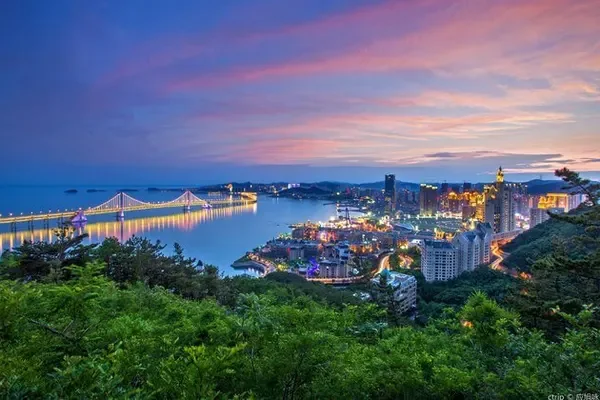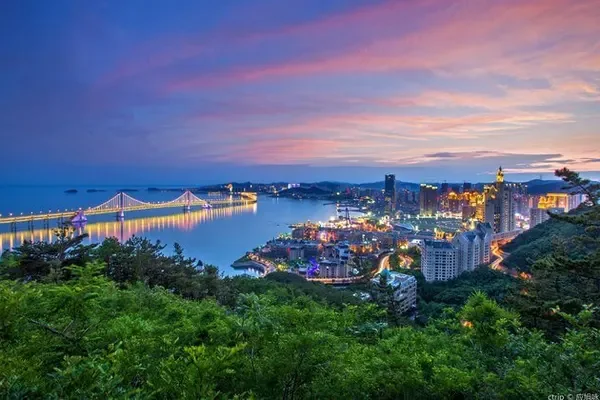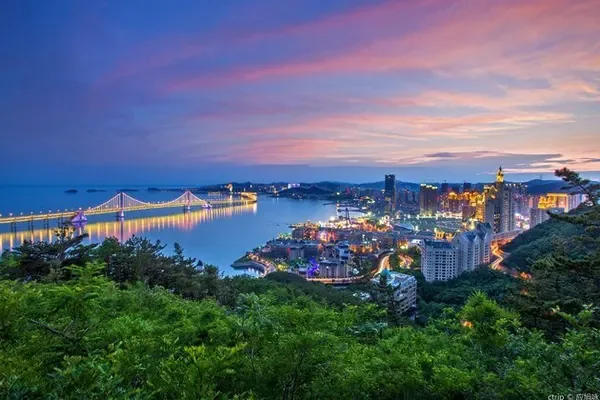Ancient Cliff Travel Notes
I like traveling, I like to be close to nature, and I like to savor cultural relics carefully. The first choice is the well-known niche attractions that have not been visited. The Guyaju Scenic Spot comes into view. First, it is a national key cultural relics protection unit. Second, the UNESCO World Geopark.
Guyaju is located in the canyon north of Dongmenying Village, Zhangshanying Township, Yanqing District, Beijing. It is a 3A-level scenic spot. The entire scenic area is not very large, and you can basically visit it in two hours. If you want to see it in detail, you can visit the entire visiting area in more than three hours. To enter the scenic spot, you must make an appointment in advance (free for those over 60 years old). However, the epidemic has improved, and on-site registration at the entrance of the scenic spot can be used as an appointment.
Self-driving is the preferred way to go to Guyaju Scenic Area. Public transportation is also very convenient. Take express bus 919 from Deshengmen Bus Terminal to Yanqing District Bus Terminal, then take Y40 bus and get off at Guyaju Station. I chose the combination of high-speed rail train + public transportation, which saves time, is convenient and fast, and does not feel tired.
High Speed Rail Train Timetable

At Beijing North Railway Station (exit of bus and subway Xizhimen Station), take train G8883, departing at 08:51 and arriving at Yanqing North Station at 09:37, the journey takes 48 minutes. At the North Square of Yanqing Railway Station, take the Y40 bus starting at 10:00, and get off at Guyaju Station, which is the scenic spot. The journey takes about 1 hour and 20 minutes.
Return: At 14:20 in the afternoon, take the Y40 bus to Yanqing Railway Station, then take the G8888 train at 17:18, and arrive at Beijing North Railway Station at 18:09.
On the 12306 website in advance, I booked a train ticket near the window. As a maverick, I started my trip to Guyaju.
From Beijing North Railway Station



The air in the compartment is fresh, clean and tidy, WIFI, charging, and hot water are all available. The second class seat is very comfortable (35 yuan)

Arrive at Yanqing Railway Station at 9:37

Take the Y40 bus departing at 10:00

Y40 bus departure timetable
Railway Station---Dongmenying Village 6:00. 8:00. 10:00. 13:00. 15:00. 18:00.
Dongmenying Village --- Railway Station 7:20. 9:20. 11:20. 14:20. 16:20. 19:20.
11:20 Arrive at the entrance of Guyaju Scenic Area

Gate of Guyaju Scenic Area


The guide map shared by World Park and Ancient Cliff Residence.

Guyaju guide map.

Entering the scenic area, along the two sides of the mountain road, there are caves of all sizes. The larger one is used as a tea room or a room for worshiping Buddha. The quality of the mountain rock here is relatively loose, so it is easier to dig. The material of the rock is very special. You can dig out some small broken stones with your hands.

The place of worshiping Buddha.

The geological weathering phenomenon of rocks in Chaoyang Cave is introduced.

Tasting tea, a tea house for rest.



There are also stone nests for candlesticks on the wall of the cave

Along the mountain road, there are also ancient wells, springs and unearthed stone rollers. The ancient wells and springs have dried up for a long time.



Guyaju is divided into the front mountain scenic spot and the back mountain scenic spot.
Houshan Scenic Area This is one of the best places to appreciate the whole picture of Guyaju. On the cliff of the spherical granite hill, five-story "cave buildings" have been dug densely along the mountain, which is so shocking. There are one-bedroom suites and three-bedroom apartments. The hole is not deep, only about 2-4 meters, and the height of the door is only about 1.6 meters. It seems that the ancient people were not tall. The cave and the cave are relatively independent, and there is no ladder connecting them up and down. I don't know how the ancients got up and down the rock wall. This is also the shooting base for many film and television dramas, such as "The Secret History of Taizu", "Invincible Brave", "Iron Pear Flower" and so on.

You can go to the cave above along the steps on the cliff. Due to severe weathering, in order to protect cultural relics, climbing is now prohibited.

It turns out that there are upward steps here, which can lead directly to the back mountain. For safety, it is now blocked by "no climbing". For safety, many caves are supported and reinforced.

It's a multi-room cave, and a manger.

Panorama of Qianshan Scenic Area



This is a suite, commonly known as a three-bedroom apartment, with a stone kang, a stone stove and a stone alcove for sacrificial offerings.


Xiwangfu is located between the front mountain scenic spot and the back mountain scenic spot, which is the most worth visiting place in Guyaju. According to legend, Guyaju was the cottage of the Xi people in ancient times, so it was called Xiwangfu.



Kang and stove in Prince Xi’s Mansion

Guyaju is not only a cultural relic, but also a world address park. There are many explanatory plaques introducing geological features and phenomena.
Next to the explanatory board are the characteristics of geological phenomena, which are very intuitive and easy to understand.

Primary joints of granite

The explanatory board introduces geological characteristics such as wind erosion niches, weathering phenomena, and biological weathering. It is easy to understand, as if people can see the geological changes hundreds of millions of years ago, which benefits people a lot.



The mountain road that enters the scenic spot has been refurbished. The slope is gentle and wide, and the steps are moderately high and low. You don’t feel tired when walking. The railings and handrails are also standard and the degree of difficulty is low. It is very suitable for the elderly and parents and children.



this is the old way

The environment of Guyaju Scenic Area is clean and tidy, and the air is fresh. I spent nearly three hours visiting. Who excavated the ancient cliff dwelling? When was it excavated? For what purpose? There is no way to verify. Known as "the mystery of the ages, the wonder of the ages".



